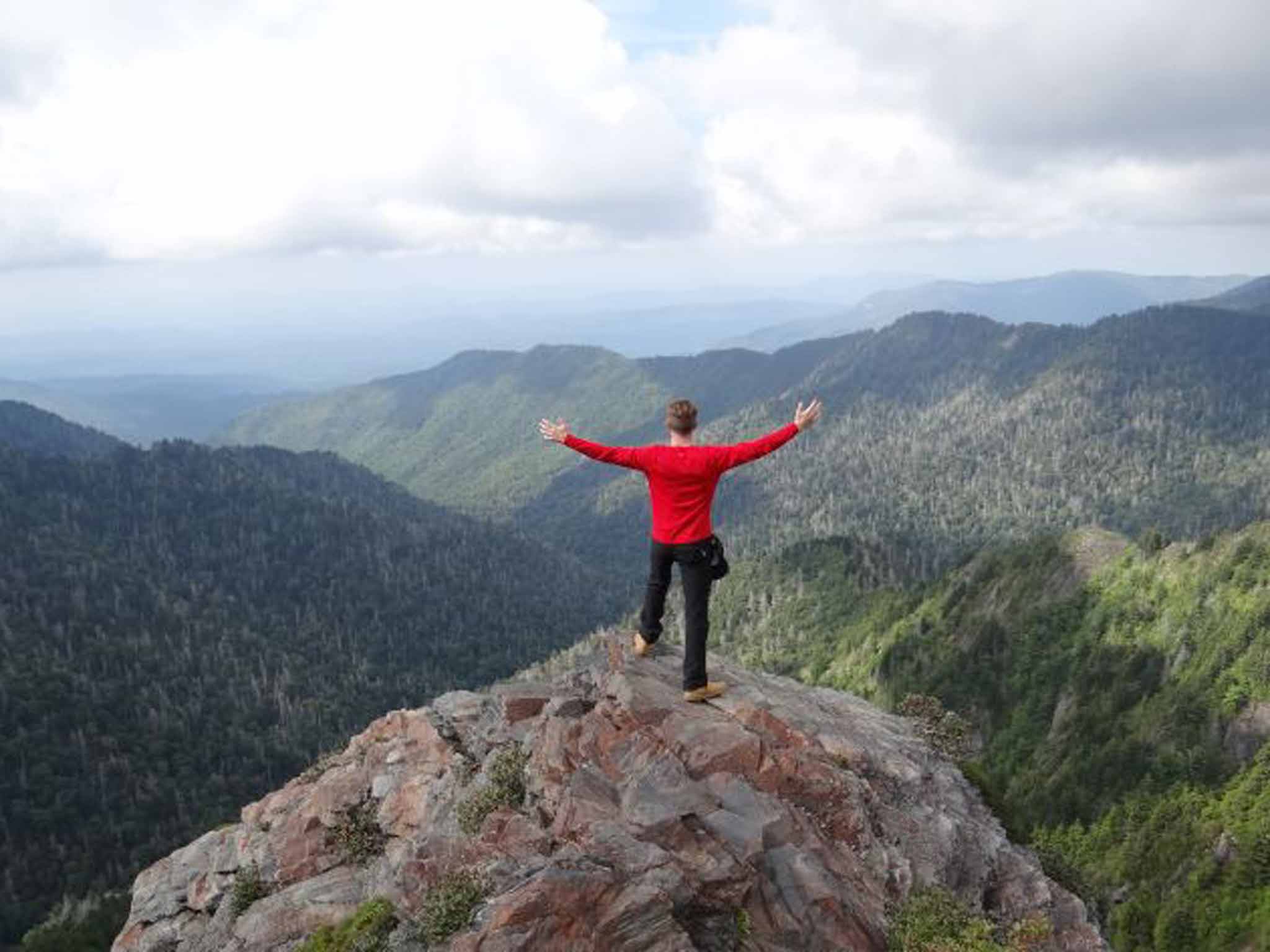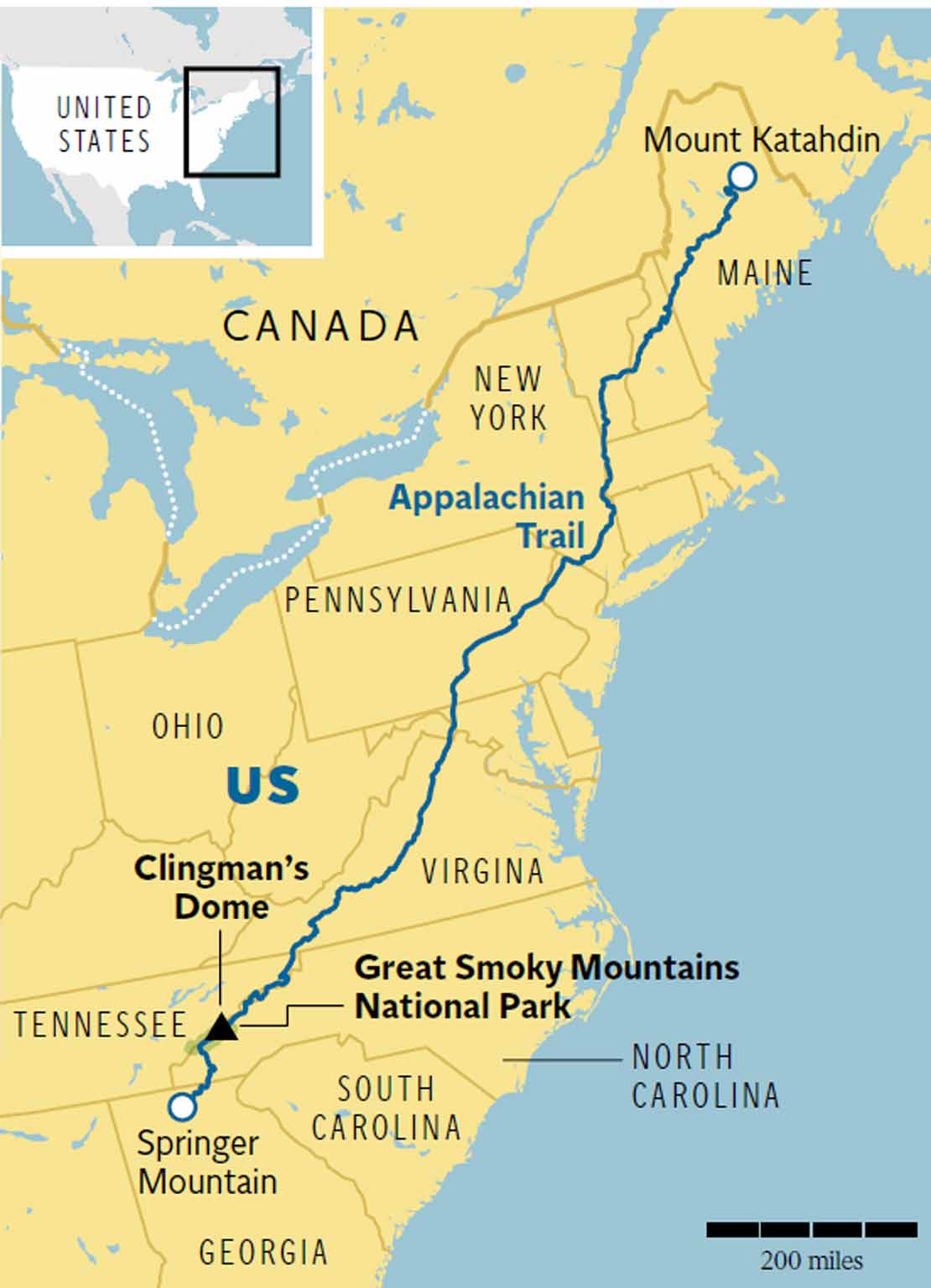America's Appalachian Trail: Follow in Bill Bryson's footsteps with 'A Walk in the Woods'
The writer's account of an exhausting trek in the remote Appalachians has been turned into a film. Andrew Eames follows his footsteps into the woods

Your support helps us to tell the story
From reproductive rights to climate change to Big Tech, The Independent is on the ground when the story is developing. Whether it's investigating the financials of Elon Musk's pro-Trump PAC or producing our latest documentary, 'The A Word', which shines a light on the American women fighting for reproductive rights, we know how important it is to parse out the facts from the messaging.
At such a critical moment in US history, we need reporters on the ground. Your donation allows us to keep sending journalists to speak to both sides of the story.
The Independent is trusted by Americans across the entire political spectrum. And unlike many other quality news outlets, we choose not to lock Americans out of our reporting and analysis with paywalls. We believe quality journalism should be available to everyone, paid for by those who can afford it.
Your support makes all the difference.At Ice Water Springs, dawn commenced by laying a delicate pink ribbon over the eastern horizon, a ribbon which turned slowly into an angry wound, livid with orange and red. The air at 6,200ft was clear and sharp, and yesterday's mist had congealed down into the valleys below us overnight, creating sedimentary lakes of cotton wool.
Nick The Axe-Murderer was first up, followed by Elk. After a quick check that no one had seen or heard any bear activity, the rest of us stayed momentarily in our sleeping bags on the shelter's platform to watch the show. We wanted to savour that handover moment from dreams to reality, with the moon still casting monochrome shadows from the west, and the multicoloured orb muscling in from the east, banishing any fears of what might have gone bump in the night.
The sun's imminent arrival was announced by the appearance of shorthand squiggles in the clear sky; the vapour trails of early flights, catching the first rays. Just above those squiggles a last defender of the dark hours was still standing its ground, burning bright. "That's Venus," said Elk. "It's a planet. Stars twinkle, see, while planets do not."
Nick The Axe-Murderer chose that moment to shoulder his military-issue backpack and leave with a grunt. He'd hardly said a word since arriving late the previous evening, and we'd only ever seen him in the half-light, so we wouldn't have been able to help the police much with their inquiries.
Half an hour later Elk was gone too: he had 20 mountain miles to do, whereas we had barely three ahead of us in order to get back to the road.
We were pleased to have shared the shelter with him, because "thru-hikers" (who hike long-distance trails end-to-end) are the aristocracy of the Appalachian Trail; you don't earn trail names if you are just section hikers like us. In real life he worked in the Empire State Building, where none of his colleagues had any idea that the suited executive they called Christopher had another, quite different, persona. Among fellow hikers he was known as Elk for his rangy stride and his ability to cover testing terrain at a fearsome speed.
Visiting the US can so often feel like stepping into a movie, but this time I really had, and with both feet. Friday sees the opening of A Walk in the Woods, Bill Bryson's account of his hike along the 2,180-mile Appalachian Trail, mostly in the company of old friend Stephen Katz.
Bryson, played by an engaging, if slightly wooden, Robert Redford, has as his companion the brilliantly delinquent and dishevelled Nick Nolte, and between them they have a series of mishaps and encounters.
I had come to the Appalachian to measure my experience of the Trail against Bryson's, joining a group with a guide company called – coincidentally – A Walk in the Woods, based in the Smoky Mountains. The Smokies straddle a southern section of the Appalachian, where the Trail reaches its highest point, running along the state boundary between South Carolina and Tennessee. It's a section that Bryson particularly looked forward to, but when he and Katz got here, it poured with rain.
We started with a briefing, and given that this was the US, it went into great detail, incorporating everything from how to adjust all the straps on a rucksack to the right way to lace your boots when you're going downhill.
Long-distance hiking is still a relative unknown here and is therefore approached with great deliberation. As Bryson points out in his book, the average American walks 350 yards a day. The figures for the Smoky Mountains National Park bear him out: of 10 million who visit, only 9 per cent ever leave Tarmac, and only 1 per cent go hiking. Furthermore, our guide, Eric, explained that lots of those who set out to do the Trail give up after a day or so. Either it is too hard or not at all what they expected.
I didn't personally find it to be either of those. We were doing three days, mostly at around 5-6,000 ft (higher than Ben Nevis) in one of its wildest areas. And although it wasn't a section which reflected the diversity of the Eden that is the Smoky Mountains – there are more than 100 species of tree – nor is it bleak. There are butterflies and red squirrels, huckleberries and blueberries, goldenrods and white snakeroot.
All the transpiration from all that plant life creates the haze that earns the Smokies their name.
For most of those days we followed a ridge line, doing lots of "puds" – pointless up and downs – mostly in boreal forest of Fraser firs, red spruce, mountain ash and yellow birch. Some of these trees, Eric told us, were more than a thousand years old, but they didn't look it.
Like many things in the United States, the Appalachian Trail is a place of superlatives. When it opened, back in 1937, it was the longest footpath in the world, and unique in that it was an artificial construct, where most of the world's footpaths are former pilgrimage routes, drovers' tracks, towpaths and so on. It was conceived to connect farms and wilderness study camps for city-dwellers and passes through no fewer than 14 states on its journey tracking the Appalachain range from Springer Mountain in Georgia to Mount Katahdin in Maine.
The path itself is rocky and rooty, so our progress was not fast. But Eric paced it well, starting us slowly, giving us some exercises to prevent injury, and then building in extra rest stops disguised as briefings. We stopped to talk about the etiquette upon meeting a bear. We had a session on how to relieve ourselves in the woods. We learnt about map reading, edible plants, "wound management", and the sex lives of salamanders.
Along the way we got to Clingman's Dome, the highest point on the Trail at 6,643ft, to find a brutalist conning tower at the end of a ramp, reachable by car, as most other visitors seemed to have done. By contrast, a day later an outcrop called Charlies Bunion was considerably lower but delivered a far more magnificent view, and because you have to walk to it, there was no one else there.
Then there were the overnights. To avoid the need to carry a tent, the Appalachian is dotted with shelters at regular intervals – simple three-walled structures with a roof and a sleeping platform for hikers to unroll their sleeping bags on. Because of the bears, rucksacks containing food have to be taken away from the shelter, wrapped in bin bags against the rain, and hauled up high on steel cables, which look unnervingly ghoulish in the half-light.
Shelters are places to meet other hikers, like Nick and Elk at Ice Water Springs. At the Mount Collins shelter, our fellow hikers were equally worthy of Brysonesque bit-parts. Two tough ladies doing 20-milers, and a couple of portly Hillbilly Bobs, over-equipped and full of talk.
Talk was of Squeaky, a 40-mile-a-day thru-hiker who got his name because he didn't bother to stop walking even in darkness, so the only way other hikers knew of his passing was by hearing his boots squeak by in the night. And of course there was a lot spoken about bears, the big uniting factor among all hikers; but with the nocturnal noises of the Hillbilly Bobs, there was no way any beast was coming near. One of them snored like a 40-ton truck trying to reverse up a steep hill on a cold and frosty morning.

We covered the tiniest fraction of the Appalachian in our three short days, but it was enough to give us a taste. As Bryson points out, the path is determinedly humano-phobic, choosing to shun habitation and keep strictly to the wilderness. In the book, he contrasts it to a walk he did in Luxembourg that incorporated villages, fields and woodlands to give both a topographical and socio-economic picture of the country he was walking through. You get little of that with the Appalachian; this is a case of man pitting him or herself against nature alone.
It becomes a meditative experience that forces self-examination and contemplation, a place to meet your inner being coming the other way. Unsurprisingly, many of the entries in the shelter's logbooks are either about God or The Lord of the Rings.
It begs the question of what it is that you want out of long-distance hiking; here on the Appalachian it is about companionship and hardship, wilderness purification and sense of achievement, with a net outcome of what Bryson calls "low-level ecstasy". All of the above are in the book. And in the film. And on the Trail.
'A Walk in the Woods' is on general release from 18 September
Getting and hiking there
A three-day, two-night hike in the Smoky Mountains with A Walk in the Woods (001 865 436 8283; awalkinthewoods.com) costs $445 (£297) and includes all gear, meals and guide.
The main resort town is Gatlinburg, and the closest airport is Knoxville, served by a number of airlines via their US hubs including Virgin Atlantic/Delta (0844 209 7777; virgin-atlantic.com), British Airways/American Airlines (0344 493 0787; ba.com) and United (0845 607 6760; unitedairlines.co.uk).
Several tour operators offer hiking trips to other stretches of the Appalachian. Grand American Adventures (0333 999 7965; grandamericanadventures.com) has three varieties of tour on the New England stretch, with an 11-day tour sleeping in shelters from £1,469, excluding flights.
Exodus (0845 805 7277; exodus.co.uk) offers a more wide-ranging 12-day itinerary touching on the trail in New Hampshire, Vermont, Maine and Massachusetts, with nine nights camping, and one hotel night. From £2,299 including flights.
More information
Appalachian Trail: nps.gov/appa
Join our commenting forum
Join thought-provoking conversations, follow other Independent readers and see their replies
Comments